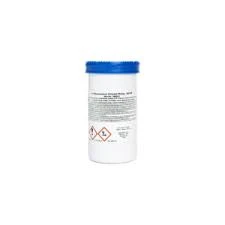Synthesis and Applications of Dodecyl Dimethyl Benzyl Ammonium Chloride in Surfactant Chemistry
Overview of Dodecyl Dimethyl Benzyl Ammonium Chloride
Dodecyl dimethyl benzyl ammonium chloride, commonly referred to as DDBAC, is a prominent quaternary ammonium compound that has garnered attention for its diverse applications across several fields, including agriculture, pharmaceuticals, and industrial cleaning. As a surfactant, DDBAC exhibits unique properties that make it suitable for use as a disinfectant, emulsifier, and biocide. Its efficacy and versatility stem from its chemical structure, which allows it to interact effectively with various surfaces and microorganisms.
Chemical Structure and Properties
DDBAC, as a quaternary ammonium salt, consists of a dodecyl chain (a 12-carbon alkyl group) attached to a dimethyl benzyl ammonium group. This hydrophobic tail (the dodecyl group) enhances its ability to bind to surfaces and penetrate microbial cell membranes, while the quaternary ammonium head provides cationic properties that are essential for its antimicrobial action. Due to these combined features, DDBAC is highly effective at reducing surface tension, allowing it to function effectively as a surfactant.
The compound is generally presented as a clear to slightly yellow liquid, with a characteristic odor, and is soluble in water. Its ability to form micelles makes it beneficial for various formulations, improving the effectiveness of active ingredients in cleaning and disinfecting applications. Moreover, due to its cationic nature, DDBAC is most effective against a wide range of bacteria, fungi, and viruses, making it a preferred choice for sanitization in healthcare settings as well as agricultural practices for crop protection.
Applications in Disinfection and Sanitization
One of the most significant applications of DDBAC is in the field of disinfection and sanitization. Its effectiveness against a variety of pathogens makes it suitable for hospitals, laboratories, and food processing environments. It is often employed in formulations for surface disinfectants, hand sanitizers, and antiseptic wipes.
DDBAC operates by disrupting the microbial cell membranes, leading to cell lysis and death. This mechanism of action allows it to eliminate pathogens quickly, thus reducing the risk of infections in various settings. The compound is effective against both Gram-positive and Gram-negative bacteria, as well as certain viruses, making it a broad-spectrum antimicrobial agent.
dodecyl dimethyl benzyl ammonium chloride

Use in Agriculture
In agricultural applications, DDBAC is utilized as a biocide to protect crops from harmful microorganisms. Its ability to adhere to plant surfaces ensures prolonged action against pests and pathogens. Integrated with other fungicides or insecticides, it enhances their efficacy, thereby supporting crop yield and health. Additionally, DDBAC is also employed in post-harvest treatments to extend the shelf life of fruits and vegetables by preventing microbial spoilage.
Industrial Cleaning Applications
In industrial contexts, DDBAC serves as a powerful cleaning agent due to its surfactant properties. It is commonly found in formulations for degreasers, detergents, and other cleaning products. Its capacity to emulsify oils and fats makes it effective in removing stubborn stains and residues from surfaces and machinery. The compound is also beneficial in controlling biofilms in industrial settings, thereby ensuring hygiene and operational efficiency.
Safety and Environmental Considerations
While DDBAC is highly effective, considerations regarding its safety and environmental impact are paramount. It is essential to adhere to recommended concentrations and usage guidelines to minimize potential risks to human health and the environment. Exposure to high concentrations of DDBAC can lead to skin irritation, respiratory issues, and aquatic toxicity if not managed properly. Therefore, regulations and safety protocols must be followed rigorously in its application, particularly in sensitive environments like hospitals and food production facilities.
Conclusion
Dodecyl dimethyl benzyl ammonium chloride stands out as a versatile and effective quaternary ammonium compound with applications spanning disinfection, sanitation, agriculture, and industrial cleaning. Its unique chemical properties allow it to function efficiently as an antimicrobial agent and surfactant, contributing to enhanced hygiene and safety in various sectors. As with any chemical, responsible usage and adherence to safety guidelines remain critical to maximizing its benefits while minimizing potential risks. The ongoing research and development surrounding DDBAC will likely continue to promote its efficacy and expand its applications in the future.
-
2-Phosphonobutane-1,2,4-Tricarboxylic Acid: Scale & CorrosionNewsAug.29,2025
-
Premium Isothiazolinones | Broad-Spectrum Biocidal SolutionsNewsAug.28,2025
-
LK-319 Special Scale And Corrosion Inhibitor For Steel Plants: Advanced Solutions for Industrial Water SystemsNewsAug.22,2025
-
Flocculant Water Treatment: Essential Chemical Solutions for Purification ProcessesNewsAug.22,2025
-
Isothiazolinones: Versatile Microbial Control Agents for Industrial and Consumer ApplicationsNewsAug.22,2025
-
Scale Inhibitor: Key Solutions for Water System Scale PreventionNewsAug.22,2025





